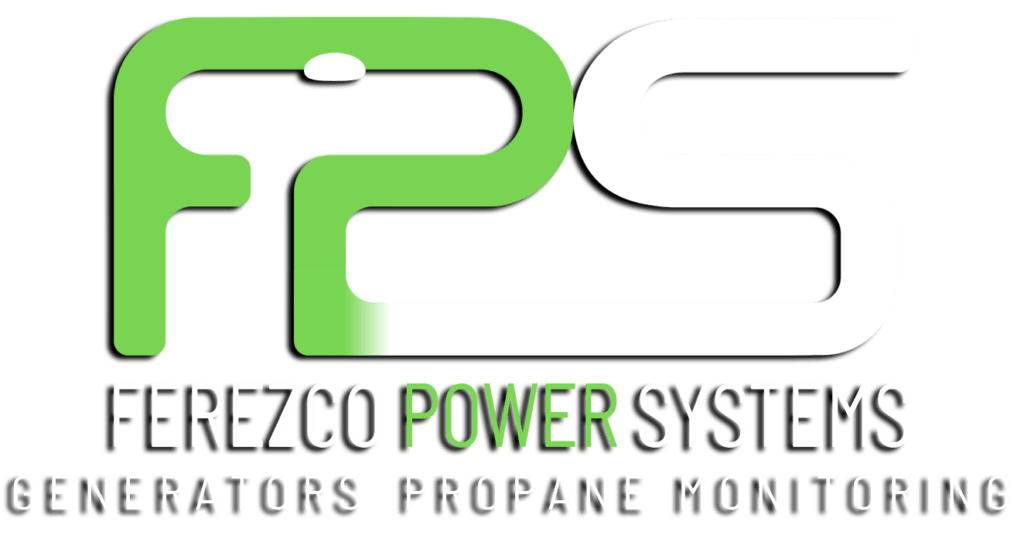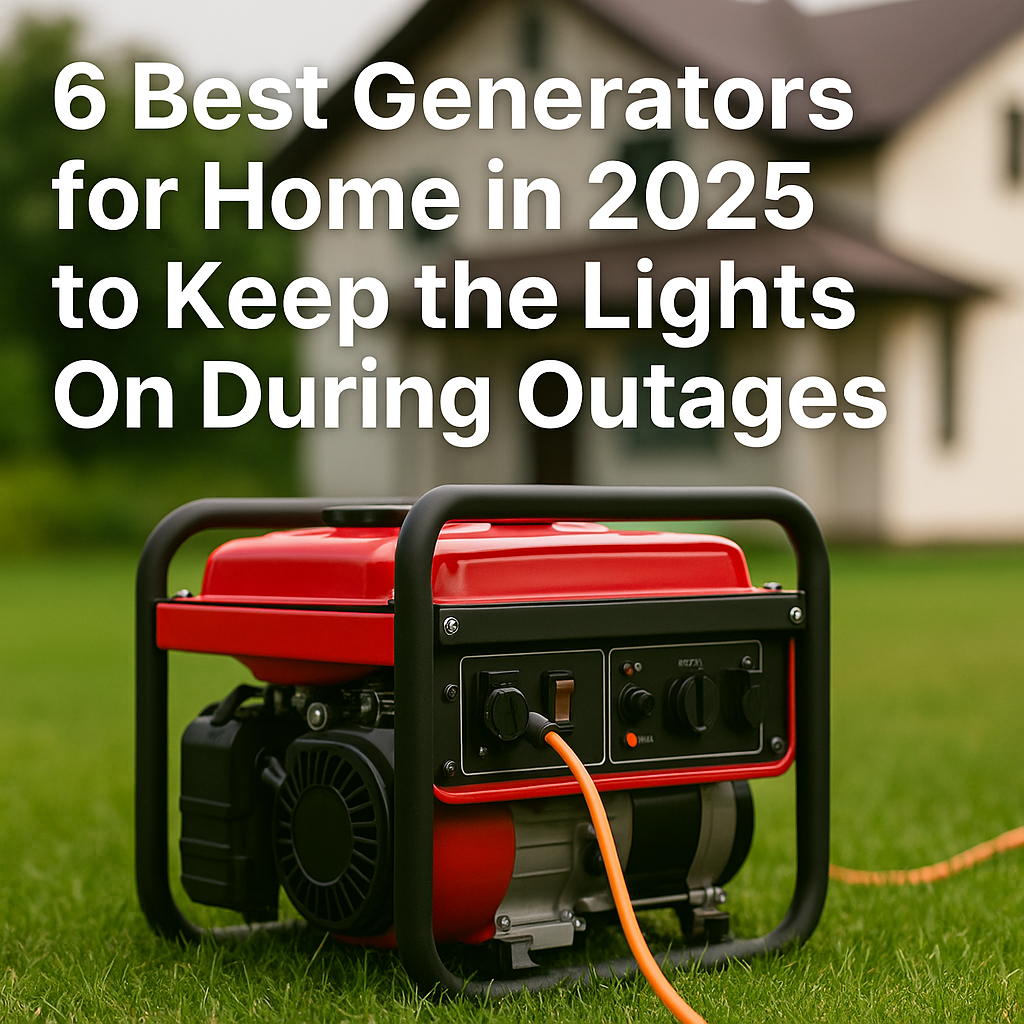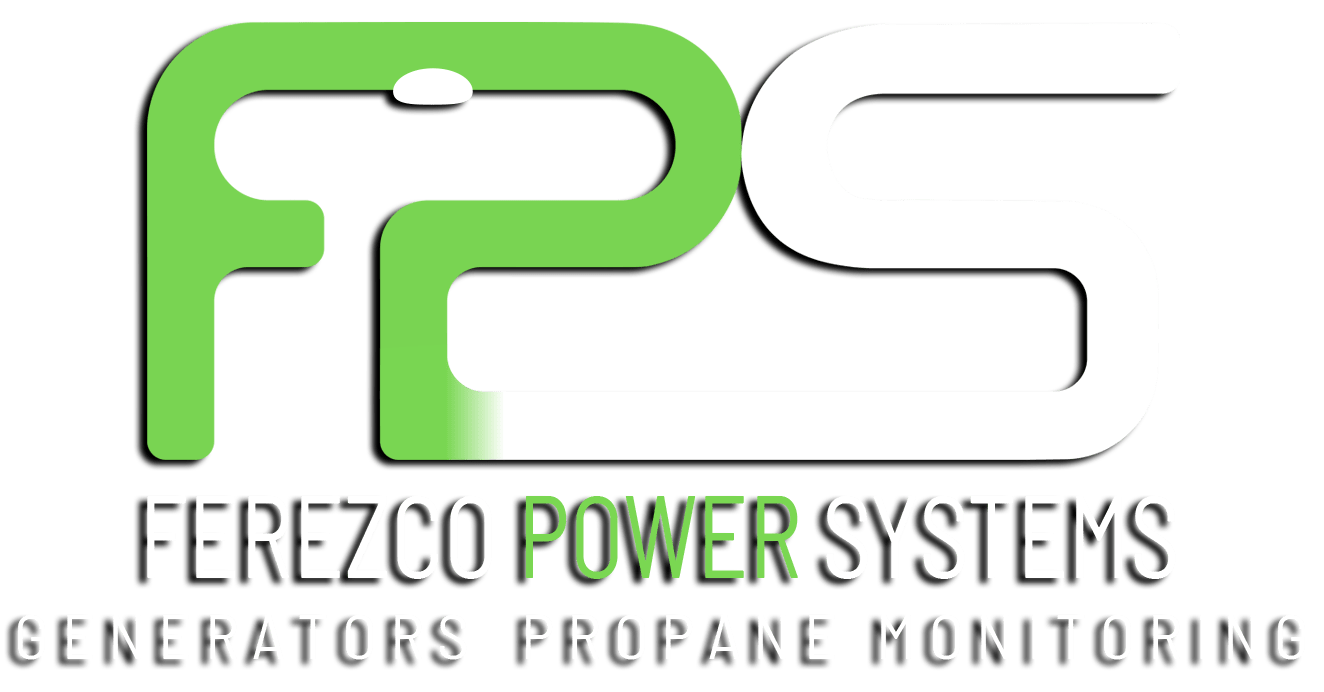Power Outages can disturb your evening by threatening your safety, compromising food storage, and damaging sensitive electronics. Recently, there have been a lot of instances of extreme weather that need you to rely on backup generators.
This detailed guide breaks down the best generators for home use in 2025. It will help you choose the perfect power solution based on your specific needs, budget, and home requirements.
Things to Know Before Buying a Home Generator
Selecting the right generator requires you to know its different factors that will tell you how the unit will perform in power emergencies. Many homeowners make costly mistakes by not paying attention to them.
Detailed wattage calculation
Purchasing an underpowered generator is one of the most common mistakes homeowners make. A generator that cannot handle the combined load of necessary appliances will continuously trip circuit breakers or shut down entirely when it is needed. The selection process should start with a power calculation.
These are the steps to know the proper generator sizing:
- Create a priority list: Identify important circuits and appliances that stay operational during an outage.
- Determine actual wattages: Check the data plate on each appliance or use a wattage meter to get the right measurements.
- The Starting Surge: Motors and compressors in appliances like refrigerators and air conditioners need 2-3 times their running wattage during startup.
- Calculate the baseline requirement: Add the total running watts of all devices that will be working at the same time, plus the highest starting wattage in those appliances.
- Include a 20% safety margin: This additional capacity prevents generator strain and accounts for possible miscalculation for future needs.
During power outages, properly sized generators can maintain chest freezers at the ideal freezer temperature (0°f). At the same time, they can also power other households without overloading the system.
Related: Understanding Wet Stacking in Generators
Running vs. Starting Wattage Explained
- Running Wattage is the power needed to keep an appliance working continuously.
- Starting Wattage is the additional power surge needed when motors/compressors first turn on.
- Starting surge is usually 2-3 times higher than running wattage, but only lasts seconds.
- Example: A refrigerator might draw 700 watts while running but surge to 2,100+ watts at startup.
- Many generator failures happen because they were sized for running watts.
- Proper generator sizing should be for both running and starting wattage requirements.
Common Appliance Wattage Reference
| Appliance | Running Watts | Starting Watts |
| Refrigerator | 600-800 | 1,200-2,400 |
| Freezer | 500-700 | 1,000-2,100 |
| Furnace Fan | 800 | 2,350 |
| Sump Pump | 800-1,500 | 1,300-4,500 |
| Well Pump | 1,000-2,000 | 3,000-6,000 |
| Window AC | 1,200 | 3,600 |
| Lights (per bulb) | 60-100 | 0 |
| Microwave | 1,000 | 0 |
Pro tip from experience: For maintaining ideal freezer temperature (0F/-18C) during extended outages. You need at least 700 watts available for your freezer plus capacity for defrost cycles. This prevents food loss, which can quickly exceed the cost of a properly sized generator.
Related: What Happens If You Don’t Maintain Your Generator?
Safety and Installation Guidelines
Carbon Monoxide Prevention
- Install generators 20+ feet from doors, windows, and vents
- Never operate indoors or in enclosed spaces
- Install CO detectors on each floor and near sleeping areas
- Watch symptoms: headache, dizziness, weakness, nausea
Transfer Switch Requirement
- Prevents dangerous back feed to utility lines
- Available as manual or automatic switches
- Must be installed by a licensed electrician
- Installation costs: $500-$1,500
Maintenance Requirements
- Test monthly (30 minus under load)
- Change oil every 50-100 operating hours
- Replace filters regularly
- Schedule annual professional inspection
- Manage fuel properly (replace gasoline every 6 months)
Different Types of Home Generators
There are four main types of generators that homeowners usually consider when preparing for power outages.
Portable Generators
This is the popular choice for homeowners looking for an affordable and versatile backup power solution. These units can be moved wherever power is needed the most. This makes them practical for various scenarios, from tailgating to emergency home use.
Most of them run on gasoline and provide enough power to keep important appliances running. According to the Consumer Energy Center, a mid-sized portable generator can power a fridge, freezer, some lights, and basic electronics at the same time. This makes sure your freezer temperature stays at the ideal freezer temperature of 0F (-18C) to prevent food spoilage during extended outages.
| Pros | Cons |
| Lower upfront cost ($500-$2,000) | Manual setup required during outages |
| Highly portable and versatile | Limited runtime (8-12 hours per tank) |
| No professional installation needed | Must be operated outdoors because of emission |
| Suitable for running essential appliances | Needs regular maintenance and testing |
Inverter Generators
They produce AC power, invert it to DC, and finally invert it again to clean AC power with stable sine waves and are thus suited for powering sensitive electronics such as computers, phones, and new appliances with microprocessors.
Their quiet engines vary speed according to power requirement, which means quieter operation, improved fuel efficiency, and reduced emissions when compared to portable generators.
| Pros | Cons |
| Produces ‘clean’ power safe for electronics | Higher cost per watt ($1,000-$4,000) |
| Significantly quieter operation (53-59 db) | Generally, lower maximum output |
| Superior fuel efficiency | Not typically suitable for whole-house power |
| Lightweight and compact design | Premium models can be expensive |
Standby Generators
These generators are the gold standard for home backup power. They are usually permanently installed outside your home and connected to your electrical panel. Without any manual intervention, they can detect power outages and restore electricity within seconds.
Most standby models run on natural gas or propane and can power an entire household. The 2024 Power Outage Impact Research by the Electric Power Research Institute found that homes with these generators maintained an internal temperature of 68°f during winter outages, compared to temperatures dropping below 50°f in homes without backup power.
| Pros | Cons |
| Automatic operation with seamless power transition | Significant upfront cost ($4,000-$15,000+) |
| Power the entire home or selected circuits | Professional installation required ($1,000-$3,000) |
| No refuelling or manual startup needed | Requires adequate outdoor space and clearances |
| Weekly self-tests ensure readiness | Annual maintenance recommended |
Solar Power Stations
These have turned out to be an eco-friendly alternative for emergency backup power. These systems store energy in high-capacity batteries that can be recharged with solar panels, standard wall outlets, or even car adapters.
Unlike traditional generators, solar power stations work silently with zero emissions, making them safe for indoor use. They are good at powering small electronics, medical devices, and communication equipment. Although larger models can handle some household appliances like fridges for limited periods.
Related: How To Connect a Generator To Your House Without a Transfer Switch?
| Pros | Cons |
| Zero emissions, noise-free operation | Higher cost per watt for serious capacity |
| No fuel costs after initial investment | Weather-dependent recharging via solar |
| Minimal maintenance requirements | Limited capacity for power-hungry appliances |
| Safe for indoor use | Longer recharge times than refueling |
6 Best Home Generators
1. Generac Guardian 24kW: Best Whole-Home Standby Generator
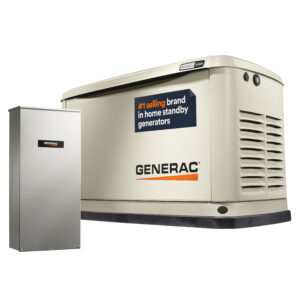
It stands out as the best standby generator solution for homeowners wanting complete power protection. It can power a large home’s entire electrical panel, including central air conditioning, electric water heaters, and others. It has an intelligent load management system that prioritizes circuits based on your preferences.
Specifications:
- Power Output: 24,000 watts
- Fuel Type: Natural gas or propane
- Transfer Switch: 200-amp automatic
- Special Features: Mobile Link remote monitoring, 5-year limited warranty
- Engine Type: G-Force 1000 Series (commercial-grade)
| Pros | Cons |
| Powers entire large home without compromise | Premium price |
| Automated weekly self-test function | Professional installation required |
| Industry-leading 5-year warranty | Requires a natural gas line or a large propane tank |
| Remote monitoring via smartphone app | Annual maintenance recommended |
2. Honda Eu2200i: Best Portable Inverter Generator
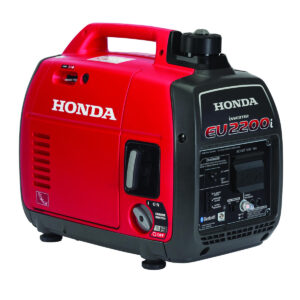
It dominates the portable inverter category thanks to its reliability, whisper-quiet operation, and clean power output. This model gives enough power to run essential appliances during an outage while maintaining safe power levels for sensitive electronics.
Specifications:
- Power Output: 2,200 watts maximum, ,800 watts rated
- Fuel Type: Gasoline
- Runtime: Up to 8.1 hours on 0.95 gallon tank (at 25% load)
- Noise Level: 48-57 dBA (quieter than normal conversation)
- Weight: 46.5 pounds
| Pros | Cons |
| Exceptionally quiet operation | Limited power output for larger appliances |
| Clean power safe for electronics | Premium price ($1,000-1,3000) |
| Renowned Honda reliability | Requires manual startup |
| Compact and easily portable | Regular maintenance needed |
3. Champion 8750-Watt Dual Fuel: Best Value Portable Generator
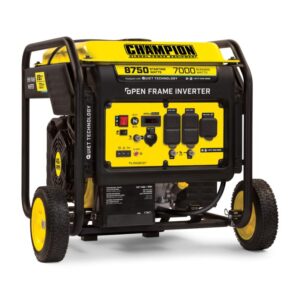
It offers versatility and power at a mid-range price point. Its ability to run on either gasoline or propane provides valuable fuel flexibility during emergencies when one fuel type might be poor.
Specifications:
- Power Output: 8,750 starting watts/ 7,000 running watts (gasoline), 7,875 starting watts/ 6,300 running watts (propane)
- Fuel Type: Gasoline or propane
- Runtime: 10.5 hours on gasoline, 5.5 hours on propane (at 50% load)
- Starting Method: Electric start with remote (battery included)
- Outlets: Multiple household and 30A RV outlets
| Pros | Cons |
| Excellent power-to-price ratio | Louder than inverter models (74 dBA) |
| Dual fuel capability provides flexibility | Heavier (219 lbs) and less portable |
| Electric and remote start included | Not suitable for sensitive electronics |
| 3-year warranty with US-based support | Requires good ventilation when operating |
4. Westinghouse WGen9500DF: Best High-Output Portable Generator
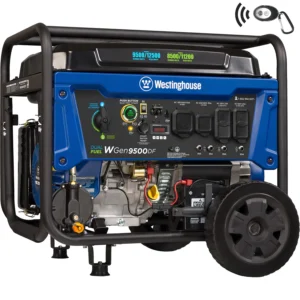
For homeowners needing maximum portable power, it offers good output with the convenience of dual-fuel operation. Its high wattage makes it capable of running multiple major appliances at the same time, including air conditioners, water heaters, and kitchen appliances.
Specifications:
- Power Output: 9,500 running watts/ 12,500 peak watts (gasoline), 8,500 running watts/ 11,200 peak watts (propane)
- Fuel Type: Gasoline or propane
- Runtime: 12 hours on 6.6-gallon tank (gasoline at 50% load)
- Starting: Electric push-button start with remote and recoil backup
- Special Features: VFTdata display showing voltage, frequency, and lifetime hours
| Pros | Cons |
| Highest portable power output available | Substantial size and weight (220lbs) |
| Remote start functionality | Requires transportation wheels |
| Long runtime between refueling | Noise – 72 dba |
| Comprehensive outlet selection | Higher fuel consumption |
5. EcoFlow DELTA Pro: Best Solar Generator for Home Backup
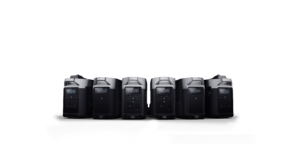
It has battery-based home backup power. With expandable capacity, fast charging, and silent operation, it is an eco-friendly option to fuel-burning generators.
Specifications:
- Capacity: 3.6kWh (can be increased to 25kWh with additional batteries)
- Output: 3,600W
- Lifecycle: 6,500+ charge cycles to 50% capacity
- Charging Options: Solar, wall outlet, EV charging stations, car charging
- Special Features: Smart app control, expandable ecosystem
| Pros | Cons |
| Zero emissions and silent operation | Higher initial investment |
| Multiple charging options | Limited runtime for high-draw appliances |
| Safe for indoor use | Requires sunny conditions for solar recharging |
| Expandable with additional batteries | Heavier (99lbs) than expected for portable unit |
6. Generac PowerPact 7.5kW: Best Budget Standby Generator
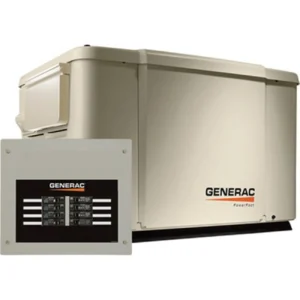
For people who want automatic backup power without breaking the bank, the Generac Power Pact 7.5 kW offers an entry-level standby solution. While not powerful enough for whole-home backup, it can keep important circuits running in an outage.
Specifications:
- Power Output: 7,500 watts
- Fuel Type: Natural gas or propane
- Transfer Switch: 50-amp automatic
- Warranty: 3-year limited
- Special Features: True Power Technology for clean power output
| Pros | Cons |
| Most affordable standby option | Limited to important circuits only |
| Automatic operation | Smaller fuel tank than larger models |
| Compact footprint | Less robust construction than premium models |
| Clean power for electronics | Basic monitoring features |
Related: How Much Electricity Does AC Units Use? A Comprehensive Comparison
Fuel Choices for Home Generators: Pros, Cons, and Recommendations
The fuel your generator uses affects its performance, convenience, and working costs. This is what you should consider when evaluating fuel options:
Gasoline
Common in portable generators. It is readily available but has limitations for emergency preparedness.
Considerations:
- Widely available at gas stations
- Relatively high energy density
- Short shelf life (3-6 months without stabilizer)
- Storage limitations due to flammability
- May be hard to find during widespread outages
Propane
It offers a lot of advantages for both portable and standby generators.
Considerations:
- Virtually unlimited shelf life
- Cleaner burning with fewer maintenance issues
- Available in portable tanks or permanent installations
- Less efficient energy density than gasoline
- Functions well in cold weather
Natural Gas
For standby generators, it provides convenience through direct utility connection.
Considerations:
- No refueling or storage needed
- Lower cost per kilowatt-hour generated
- Continuous supply (unless gas service is interrupted)
- Reduced power output compared to propane or gasoline
- Requires permanent gas line installation
Solar Energy
For these generators, sunlight availability and battery capacity are key factors.
Considerations:
- Zero fuel cost after initial investment
- Silent and emission-free operation
- Weather-dependent recharging
- Requires battery storage system
- Typically lower total capacity than fuel-based options
Related: Understanding Line vs. Load Wiring: Essential Tips and Guidelines
Understanding Generator Noise Levels (dB Ratings)
Noise factor is important when selecting a home generator, particularly in neighbourhoods with close proximity to neighbors. Modern generators differ in their sound output:
| Generator Type | Average Noise Level (dBA) | Comparable Sound |
| Conventional Portable | 70-80 | Vacuum cleaner or garbage disposal |
| Inverter Portable | 50-60 | Normal conversation or quiet office |
| Home Standby | 60-65 | Central air conditioner unit |
| Solar Generator | 0 | Silent |
Noise Reduction Tips:
- Place generators away from living spaces and neighbours when possible
- Consider sound-dampening enclosures for portable models
- Choose inverter technology for quieter operation
- Follow manufacturer recommendations for maintenance to prevent increased noise
Generator Longevity and Maintenance: Maximising Your Investment
Regular maintenance makes sure your generator performs when you need it the most. Follow these maintenance guidelines:
Portable Generator Maintenance Schedule
- Every use: Check oil and air filter
- Every 50 hours: Change oil (more frequently when under heavy load)
- Every 100 hours: Replace spark plug and clean/replace air filter
- Every 6 months: Run generator for 30 minutes with load
- Annually: Clean fuel filter and inspect fuel lines
Standby Generator Maintenance Schedule
- Monthly: Automatic self-test (check status indicators)
- Annually: Oil and filter change, air filter inspections, battery check
- Every 2 years: Replace spark plugs and inspect fuel system
- Every 5 years: Major inspection by authorized technician
Always use fresh fuel in portable generators. Stabilize stored fuel or drain the carburetor before long-term storage to prevent starting problems during emergencies.
Conclusion
Selecting the right generator needs balancing several key factors that will decide both short-term functionality and long-term satisfaction. Experienced generator owners and installation professionals think about these before making a decision:
Power Requirements
Generator capacity must be based on calculated electrical needs rather than marketing claims or general recommendations. The detailed wattage calculation is the base for deciding appropriate generator size.
Budget Considerations
The total cost of generator ownership extends well beyond the initial purchase price. A budget should include:
- Initial equipment cost ($500-$15,000 depending on type and capacity)
- Professional installation ($0-$3,000 depending on complexity)
- Transfer switch installation ($500-$1,500)
- Annual maintenance costs ($100-$300)
- Fuel storage solutions ($50-$500)
- Possible future expansion ($200-$1,000)
Fuel Availability and Storage
Different areas have different challenges about fuel availability during emergencies. Natural disasters usually create fuel storages when generators are needed most.
- Gasoline may be unavailable when pumps cannot operate without electricity.
- Propane tanks can be filled ahead of storms and stored safely for years.
- Natural gas lines usually stay operational during electrical outages.
- Solar generation depends on weather conditions and battery capacity.
Installation Space Requirements
Physical installation constraints usually eliminate certain generator options. Proper planning needs:
- Measuring available space for placement
- Making sure adequate clearance from structures (minimum 5 feet from combustible walls)
- Meeting local noise ordinance requirements
- Planning for fuel delivery or storage access
- Accounting for exhaust direction and winds
The best home generators balance power requirements, budget constraints, fuel availability, installation limitations, noise levels, and maintenance capabilities. Properly sized units make sure important systems maintain functionality during outages, including keeping freezers at the ideal freezer temperature to prevent food spoilage and financial loss.
Related: What Type of Wire Should You Use for Home Electrical Wiring?
Expert Answers to Common Home Generator Questions
- What size generator do I need to power my entire home?
A typical home with essential appliances usually needs between 6,000 to 10,000 running watts. For larger homes with multiple heavy appliances or full-house backup, opt for a generator between 12,000 to 15,000 watts. - What is the difference between running watts and starting watts?
Running watts refer to the continuous power a generator provides to operate appliances steadily. Starting watts indicate the additional surge power needed briefly to start electric motors and compressors (like refrigerators or air conditioners). - Can I run sensitive electronics like laptops and TVs on my generator?
Yes, but ensure your generator is an inverter-type generator. Inverter generators produce clean power with stable voltage, making them safe for sensitive electronics. - Which fuel type is best for a home generator: gasoline, propane, natural gas, or solar?
Each has pros and cons:
- Gasoline: Widely available, affordable but has a shorter shelf life.
- Propane: Cleaner burning, longer shelf life, easier storage.
- Natural gas: Convenient for homes with natural gas lines, unlimited fuel supply but less portable.
- Solar: Environment-friendly, quiet, but reliant on sunlight and has higher initial setup costs.
- How long can a home generator run continuously?
Portable generators typically run 8-12 hours continuously, depending on fuel tank size and load. Standby generators, connected to propane or natural gas lines, can run for days or even weeks continuously during extended outages. - Do I need a professional to install a home generator, or can I do it myself?
Portable generators can usually be set up by homeowners following safety guidelines. However, standby generators must be installed by professionals to meet electrical codes and safety standards. - How far should a generator be placed from my house for safe operation?
Generators should be placed outdoors, at least 15-20 feet away from doors, windows, and vents to prevent carbon monoxide poisoning. Always ensure your generator is placed in a well-ventilated area. - Do generators need regular maintenance even when not used frequently?
Yes. Regular maintenance, including oil changes, battery checks, and fuel treatments, helps ensure your generator runs smoothly when needed. It’s advisable to start your generator once a month to confirm functionality. - Can a generator overload damage my appliances or electronics?
Yes. Overloading can cause voltage fluctuations that damage appliances. Always calculate your wattage needs and choose a generator rated slightly higher than your expected usage. - What noise level should I expect from home generators?
Generators typically range between 50-80 dB. Inverter generators are quieter (50-65 dB), comparable to conversational speech, while conventional generators can be louder (70-80 dB), similar to heavy city traffic.
